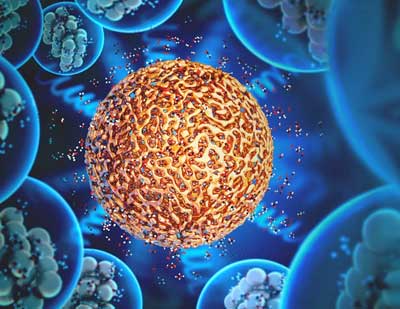| Oct 16, 2019 | |
Crossing the great divide between model studies and applied reactors in catalysis(Nanowerk News) Just because a model catalyst effectively drives a reaction in a well-controlled environment doesn’t mean it will work as well under more practical conditions. For years, scientists have strived to predict catalysts’ performance. In an ultrahigh vacuum model reactor, catalysts typically work at lower pressures and temperatures than in applied catalytic reactor studies. |
|
| Now, a team devised a way to bridge the gap between these two extremes. Using their approach, they can predict catalyst performance across a wider range of temperatures and pressures (Nature Catalysis, "Crossing the great divide between single-crystal reactivity and actual catalyst selectivity with pressure transients"). | |
| The findings show that scientists can use fundamental surface science to predict behavior in applied catalytic reactor studies. The study is a stepping stone in designing efficient catalytic processes. Further, this work offers in-depth insight into a series of reactions that turn alcohols to higher-value chemicals. | |
 |
|
| A team devised an approach using kinetic and mechanistic data from model studies to predict the selectivity of a catalyst. They tested it on a nanoporous gold catalyst under a large range of experimentally relevant conditions. (Image: Ryan Chen, Lawrence Livermore National Laboratory) | |
| Researchers often use model catalysts to study selectivity, a measure of a catalyst’s performance. However, for years, researchers did not have a way to scale-up the selectivity calculations from model catalysts to applied reactor studies. These reactors typically operated at higher temperatures and pressures than model studies, which operated in ultrahigh vacuum reactors. | |
| Researchers changed that situation. Their work focused on the oxidative self-coupling of methanol over gold. The team found that kinetic and mechanistic information derived from model system single crystal studies was predictive of those measured on nanoporous gold catalysts under practical catalytic conditions. | |
| They identified adsorbed atomic oxygen as the initiator of the catalytic cycle, in accord with the ultrahigh vacuum studies. Indeed, the principles of surface reactivity governing the elementary steps known from the fundamental studies applied equally to the two vastly different circumstances. | |
| The researchers provided the link between the fundamental and applied settings by determining the time constants for product formation in response to reactant pulses over the actual catalyst at reactor temperature over a wide range of active oxygen coverages. They re-created these time constants numerically to high precision from the kinetics and mechanism determined on the gold single crystal with only minor adjustments. | |
| The numerical simulation, when expanded to higher pressures, predicted the selectivity patterns seen under catalytic conditions in the fixed bed reactors, demonstrating continuity between model systems and applied catalysis. The numerical analysis showed a strong positive correlation between the surface lifetime of surface-bound methoxy and the selectivity to the desired product (methyl formate), indicating that achieving high selectivity of the coupling product hinges on optimizing the surface coverage of methoxy. | |
| The work builds a pathway for extending these results to other analogous reactions. |
| Source: U.S. Department of Energy, Office of Science | |
|
Subscribe to a free copy of one of our daily Nanowerk Newsletter Email Digests with a compilation of all of the day's news. |
